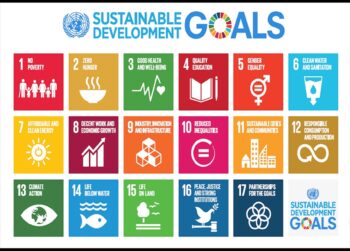Biomass supply chains and their contribution to the Sustainable Development Goals
Bioenergy is the largest source of renewable energy in the world and is expected to grow substantially as one of many complimentary pathways to support decarbonization initiatives to limit global warming by 1.5 degrees Celsius. Given this anticipated trend, 37 best practice case studies from 18 countries were selected by members of the IEA Bioenergy Technology Collaboration Programme to demonstrate how biomass supply chains could be implemented to support sustainable bioenergy production, while simultaneously contributing to the United Nations Sustainable Development Goals (SDGs)*.
Case studies covering the four most common biomass supply chains (forest biomass, agriculture residues, energy crops, waste) across different end-uses (transport fuels, heat, electricity) were used to assess the methods, practices and technologies used to sustainably grow, harvest, transport, process and use biomass for bioenergy. To summarize these supply chains, two-page summaries were prepared to summarize each case study’s supply chain, contributions to the SDGs, and supporting policies.
The case studies include for example:
- Forest harvest residues and forest fire affected wood for energy in Canada.
- Valorisation of olive tree prunings in Italy.
- Logistic centre for crop harvest and feed processing residues in Austria.
- Briquettes from rice husks in Tanzania.
- Willow for energy and wastewater treatment in Sweden.
- Perennial grass in buffer zones to enhance agricultural water quality in the United States.
- Integrated bioenergy tree crop systems in farm landscapes in Australia.
- Intercropping to improve soil fertility and improve agricultural yields in Zambia.
- Biogas from chicken manure and wastewater in China.
- Biogas from vinasse surplus in sugarcane industries in Brazil.
Beyond directly contributing to the provision of affordable and sustainable energy (SDG 7) more than half the case studies contributed to SDGs related to economic development and growth (SDG 8), technological progress and promoting sustainable industries (SDG 9), and resource-use efficiency (SDG 12). Several case studies contributed to climate change mitigation specifically (SDG 13) as they were supported by climate focused funding programs or policies. The case studies also contributed to a number of other SDGs, depending on the type of supply chain. For example, forest biomass and waste residue case studies contributed predominantly to sustainable land management (SDG 15), while agriculture residue and energy crop case studies contributed to improving farming and economic opportunities for people (SDG 2) and improving clean water and sanitation (SDG 6). Similarly, contributions to some SDGs are dependent on geographic location. For example, supply chains in rural, remote and indigenous communities contributed to improving economic and educational opportunities (SDG 1; SDG 4), as well as reducing inequalities among women and between rural and urban regions (SDG 5; SDG 10)
Full report: IEA Bioenergy – SDG Case Study Report – FINAL

* for more information about the SDGs, see https://www.undp.org/sustainable-development-goals


